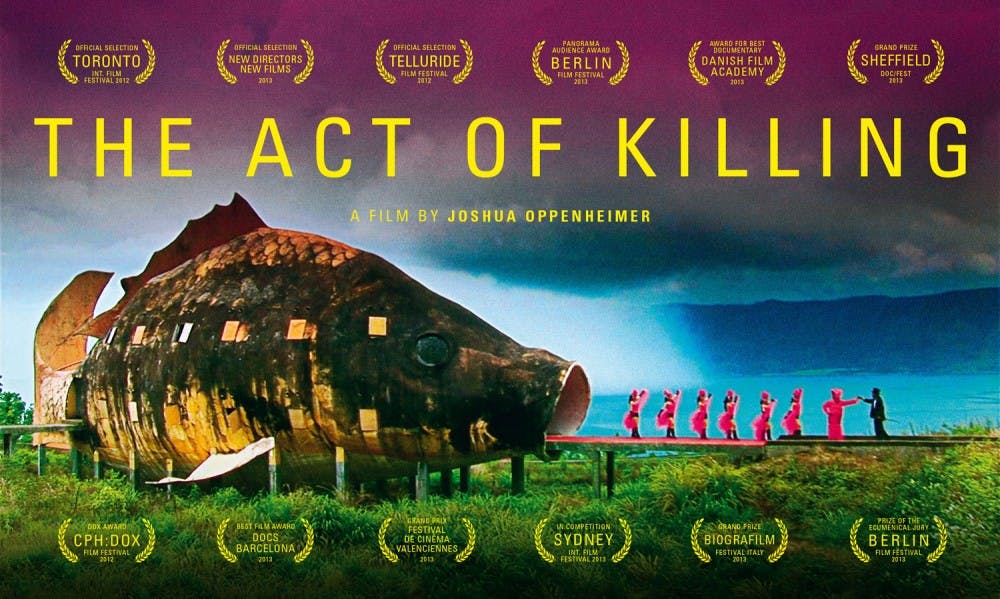Indonesian killers open up on camera.
“The Act of Killing” is an extraordinary documentary that must be seen to be believed. The film is full of lines and images that sear themselves into the viewer’s memory.
Joshua Oppenheimer, an American-British filmmaker based in Denmark, found a number of
Indonesian men who committed hundreds of murders and other atrocities in their country starting in the mid-1960s and convinced them, without much prodding, to be in his documentary. The main interviewees in the film are Anwars Congo, Adi Zulkadry and Herman Koto, who led a death squad in North Sumatra as part of the Indonesian killings of 1965-1966. They extorted money from people of Chinese ethnicity (which the killers are shown still doing today) and killed them if they refused. However, Oppenheimer did not simply get them to agree to talk on camera, but also to stage re-enactments of their murders and torturous acts on film. Often the killers, who didn’t go to jail for the murders, play their own victims while wearing gruesome makeup to make their faces look burned and slashed. Sets were built, costumes worn and camera crews brought in to make the scenes look like a professional movie production. Herman is often in drag during the recreations, wearing bikinis and other tropical attire.
One of the most eerie components of the film is that these men are still revered by some of their countrymen. Current leaders and members of the Indonesian parliamentary organization Pancasila Youth are shown praising Anwars and his accomplices.
It is mind boggling how the filmmaker got away with his crazy concept. The film is executive produced by renowned documentarians Werner Herzog (“Grizzly Man”) and Errol Morris (“The Fog of War”). Either one of them could have directed this film in his youth, especially Herzog. It is not surprising that they saw the film and wanted to help promote it.
The documentary is grueling to sit through, but manages to be incredibly entertaining and fascinating at the same time. As horrible as he is, Anwars came off as a charming individual. Viewers can’t ignore the terror, suffering and pain he caused, but he provides the film with a mesmerizing central figure.
The title of the film is key to dissecting and analyzing its message and reason for being made. “The Act of Killing” asks what restaging these murders and scenes of violence mean to Anwar and the rest of the murderers? By putting themselves in the place of their victims, what does that do to alter their perspective? Did they view their actual killings in the 1960’s as performances to avoid facing the reality of their crimes? They started out as black market movie ticket scalpers and were promoted to kill off people. Early in the film, Anwars says that the way they killed people was influenced by American gangster movies. He names Al Pacino and Marlon Brando as inspiration and says in a matter-of-fact way that they learned from American movies that strangling a victim with wire was a simpler and less messy way to murder a person. What makes the film so brilliant and troubling is how Oppenheimer lets the men confront their demons by setting up these movie scenes.
Throughout the film, Anwars talks about nightmares he has (and one is even staged) and how they haunt him, but for most of the film, he is convinced that what he was doing was just and does not confront what his conscience is telling him. By the end of the film, through viewing some of the footage he recreated, Anwars breaks down and sees the truth.
There has been nothing more powerful or transfixing this year in a film than the final moments of “The Act of Killing.”
“The Act of Killing” is playing in Columbia only at the Nickelodeon Sept. 9-11: Monday at 2:30 p.m., Tuesday at 5:30 p.m., and Wednesday at 8 p.m.

